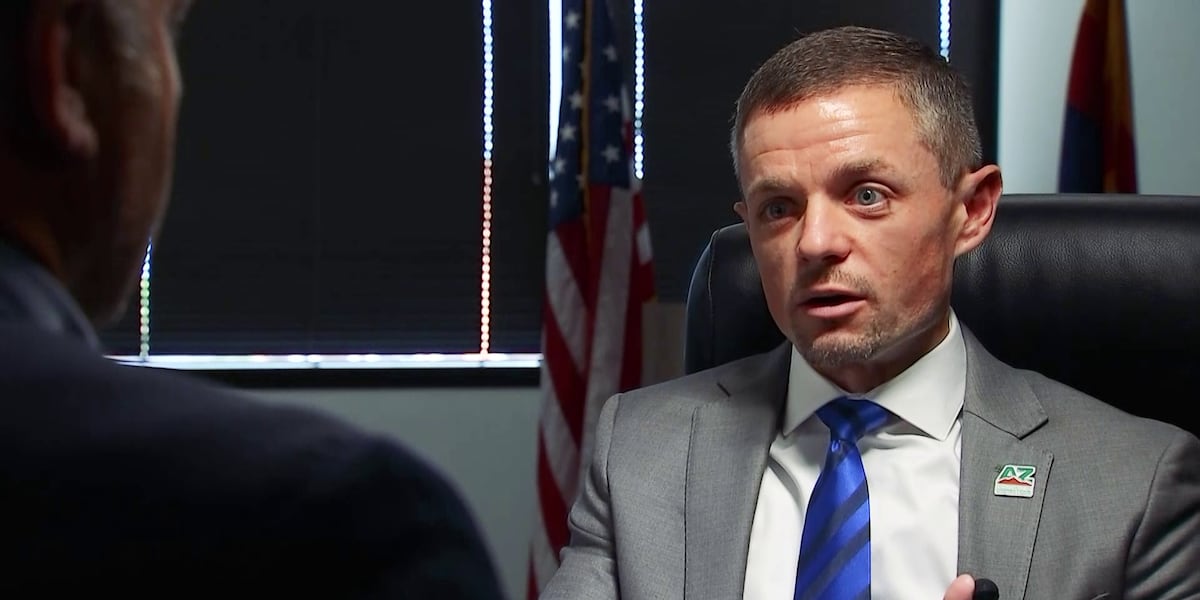West
House Democrats to head to US-Mexico border in California to scrutinize Trump security policies

A delegation of House Democratic lawmakers will visit a portion of the southern border on Friday to conduct oversight of the Trump administration’s border policies “firsthand” as authorities continue the president’s mass deportation program.
Rep. Bennie Thompson, D-MS., the ranking member of the House Homeland Security Committee, will lead the delegation.
Also going will be Reps. Lou Correa and Sara Jacobs, both of California; Delia Ramirez of Illinois; LaMonica McIver and Nellie Pou, both of New Jersey; and Tim Kennedy of New York.
TRUMP ADMIN ENDS DEPORTATION PROTECTIONS FOR MASSIVE NUMBER OF VENEZUELANS AMID ILLEGAL IMMIGRATION CRACKDOWN
A group of adult and child migrants are smuggled at the Tijuana-San Diego border. (Carlos Moreno/Anadolu via Getty Images)
Fox News Digital has reached out to Thompson’s office. The lawmakers will visit the U.S. Border Patrol’s San Diego Sector.
San Diego County Supervisor Jim Desmond, who has called for greater border security in the past, criticized the timing of the visit.
“They should have been visiting when we had the southern invasion across our border and thousands of people coming across and there wasn’t as much attention then,” Desmond told Fox News Digital. “But I’m glad they’re here now.
“It does seem like ‘Where were you when we had so many people who were coming across before?” he added. “But I’m glad they’re here now.”
Rep Mark Green, R-Tenn., blasted Democrats for now wanting to visit the southern border following years of denying a crisis as record numbers of illegal migrants flowed into the U.S.
“The American people will not forget how congressional Democrats turned a blind eye as their own party created the worst border crisis in U.S. history,” Green said in a statement. “When the Committee held a field hearing in 2023 in Pharr, Texas, no Democrat members attended. My counterpart, Mr. Thompson, even repeatedly called hearings about the border crisis a waste of time.”
“While the visit tomorrow comes years too late, I am grateful Democrats will be drawing attention to the law and order that the Trump administration has and will continue to restore,” he added. “They will have the opportunity to witness the rising morale of our CBP personnel, who now have the needed support to do their jobs. It clearly was this easy to end the crisis––Democrats just didn’t want to.”
TRUMP REPORTS ILLEGAL IMMIGRANT ENCOUNTERS AT HISTORIC LOWS DURING FIRST FULL MONTH IN OFFICE

Chairman Rep. Bernie Thompson (D-MS) speaks before the House Select Committee. (Getty Images)
The Trump administration has deported more than 100,000 illegal migrants in the weeks since Trump returned to the White House on Jan. 20, according to a New York Post report citing a Department of Homeland Security official.
“He’s doing what he was voted in to do. Point blank!” a U.S. Immigration and Customs Enforcement (ICE) source told the outlet.

A Marine looks towards Tijuana, Mexico, standing between two border walls in San Diego. A group of House Democrats will visit the border in San Diego on Friday. (AP Photo/Gregory Bull)
Trump’s second term, much like his first, has consisted of executive orders, enforcing current laws and hard-line messaging to clamp down on illegal crossings. On his first day back in office, he declared a national emergency at the southern border.
Fox News Digital’s Michael Dorgan contributed to this report.
Read the full article from Here

Alaska
Alaska man unscathed after being pinned for hours by 700-pound boulder

An Alaska man who was pinned facedown in an icy creek by a 700-pound boulder for three hours survived the ordeal with only minor injuries, thanks in part to his wife’s quick thinking and lots of luck.
Kell Morris’ wife held his head above water to prevent him from drowning while waiting for rescuers to arrive after Morris was pinned by the boulder, which crashed onto him during a hike near a remote glacier south of Anchorage.
His second stroke of luck came when a sled dog tourism company that operates on the glacier overheard the 911 dispatch and offered up its helicopter to ferry rescuers to the scene, which was inaccessible to all-terrain vehicles.
Once rescuers arrived, it took seven men and inflatable airbags to lift the boulder off as he drifted in and out of consciousness.
Jason Harrington/Seward Fire Department via AP
Morris, 61, said he realizes he is probably the luckiest man alive. “And luckier that I have such a great wife,” he said Thursday.
His wife, Jo Roop, is a retired Alaska State Trooper. They moved to Seward, about 120 miles south of Anchorage, from Idaho last fall when she took a job with the local police department.
On Saturday, they wanted to avoid the big crowds that converge on the Kenai Peninsula community during holidays and decided to hike near Godwin Glacier on an isolated and undeveloped trail behind a state prison, Seward Fire Chief Clinton Crites said.
Their trail was actually a rocky creek bed lined with large boulders deposited by the glacier.
Morris said he noticed dangerous boulders, some weighing up to 1,000 pounds, along the banks of the creek and avoided them the best he could, until he ran into an area he couldn’t pass.
“I was coming back and everything, the whole side slid out from under me,” he said.
He said things became a blur as he tumbled down the embankment about 20 feet, landing face down in the water.
Then he immediately felt the boulder hit his back in what Crites described as “basically an avalanche of boulders.”
The way Morris landed, there were rocks under him, in between his legs and around him that caught the weight of the boulder, preventing him from being crushed, Crites said. But the massive rock still had him pinned, and Morris felt intense pain in his left leg and waited for his femur to snap.
“When it first happened, I was doubtful that there was going to be a good outcome,” Morris said.
Jason Harrington/Seward Fire Department via AP
His wife tried to free him for about 30 minutes, putting rocks under the boulder and trying to roll it off him, before she left to find a cell signal.
Amazingly, she only had to walk about 300 yards to connect with 911 and relied on her law enforcement experience to send exact GPS coordinates to dispatch.
A volunteer at the neighboring Bear Creek Fire Department heard the call while working at the sled dog tourism operation and diverted the helicopter used to ferry tourists to the scene. Ultimately, firefighters who couldn’t navigate their all-terrain vehicles over the boulder field jumped out of the helicopter.
“The patient was in a boulder field and the helicopter could only hover while firefighters had to jump from the helicopter to the ground as the helicopter could not land safely,” the Seward Fire Department said in a statement posted to Facebook.
By this time, Morris was hypothermic from the cold water running off the glacier, Crites said, and his wife was holding his head out of the water.
“I think if we hadn’t had that private helicopter assist us, it would have taken us at least another 45 minutes to get to him, and I’m not sure he had that much time,” Crites said.
The Bear Creek Fire Department said it assisted the Seward Fire Department. “After dispatch one of our volunteers who was working with Seward Helicopter Tours contacted us and offered assistance by helicopter,” the Bear Creek Fire Department wrote on Facebook. “The pilot of the helicopter immediately jumped into action and helped haul gear and rescuers up to the patient aiding in quick response to the patient.”
The firefighters used two airbags normally reserved to extract people from wrecked vehicles to slightly lift the boulder.
“But then it just became an all-hands brute force of ‘one, two, three, push,’” Crites said. “And seven guys were able to lift it enough to pull the victim out.”
An Alaska National Guard helicopter lifted them out of the creek bed with a rescue basket.
Morris spent two nights at the local hospital for observation but walked away unscathed.
“I fully anticipated a body recovery, not him walking away without a scratch on him,” Crites said.
Morris, who is now reflecting on his ordeal at home, acknowledged it might have been a little wake-up call to stop doing things like this at his age.
“I was very lucky. God was looking out for me,” he said.
When he and his wife go hiking this weekend, they are going to stick to established trails.
“We’re going to stop the trailblazing,” he said.
“We are grateful we could support our first responders and help someone in need. So glad this story had a positive ending,” Seward Helicopter Tours wrote on Facebook.
Arizona
Arizona prisons director defends practice of lowering inmate custody level

PHOENIX (AZFamily) — Ricky Wassenaar was already serving 16 life sentences for his role in an escape attempt and hostage standoff at the Lewis Complex prison in Buckeye in 2004. For the past 20 years, he remained mostly out of the limelight, serving his time.
But in April of this year, Wassenaar attacked three inmates in the Cimarron Unit of the state prison in Tucson, killing them, and sparking a controversy over how he was able to carry out the murders and how he had access to other inmates in the first place.
“I would have killed at least seven. My goal was at least seven,” Wassenaar told True Crime Arizona’s Briana Whitney, in a phone interview. She said he seemed excited to talk about it, bragging that he had provided a service, because the inmates he killed were sex offenders.
According to Wassenaar’s inmate profile, at the end of 2024, he was moved out of maximum security, where he had been for decades, and into close custody, which is a slightly lower level of security.
“He was max custody and then he was put out in close custody, which means he gets to walk among them (other inmates),” said Rodney Carr, who is a former warden in the Arizona prison system.
He left the Arizona Department of Corrections, Rehabilitation and Reentry after Gov. Katie Hobbs hired Ryan Thornell as the new director. Thornell came to Arizona from Maine, where he was deputy commissioner of a prison system a fraction the size of Arizona’s.
“I worked for a lot of directors and not always that I agreed with. But that’s my job. Well, with him it got to the point where I couldn’t,” said Carr.
Carr and another former warden, as well as several correctional officers, reached out to Arizona’s Family Investigates with similar complaints: that the department under Thornell’s leadership was moving maximum security inmates into close custody, where it costs less and requires fewer correctional officers to oversee the inmates.
“Under the way they’re managing maximum security inmates in a closed custody environment, staff are going to get hurt,” said Carr.
In an interview with Arizona’s Family Investigates, Thornell said he is moving inmates out of maximum security. “That is absolutely something we are doing. Just like every other department of corrections across the country must do. It’s a practice and we are doing that here,” said Thornell.
He said 90 to 95% of inmates who are in custody will eventually be released into the community, including those in maximum security. And Thornell said keeping them in maximum security the entire time they are in prison is not good for the community once they are released. He said the effect the isolation of maximum custody has on inmates is real and often negative.
“How can I say that somebody in max custody is OK to release into local Arizona, but they’re not OK to release into a close custody yard that still has fences or razor wire?” he said.
When asked if it was a mistake to take Wassenaar out of maximum custody, Thornell said no, but he couched his answer.
“Hindsight is always 20/20, right? So, knowing what I know today, should we have moved him out of max custody? Yes, we should have. Would I do it knowing the facts that I have at my disposal today? Knowing what he did then? No, I wouldn’t. But the practice was sound. It’s still a sound practice,” he said.
Thornell acknowledged that the number of violent incidents in close custody has increased, but he denied that it was the result of max-custody inmates creating more problems.
“It’s easy for a warden, a former warden, to come forward and say, ‘20 years ago, that’s not how we did it.’ Well, 20 years ago, nobody cared who we were releasing back into the community,” said Thornell.
See a spelling or grammatical error in our story? Please click here to report it.
Do you have a photo or video of a breaking news story? Send it to us here with a brief description.
Copyright 2025 KTVK/KPHO. All rights reserved.
California
California bill proposes pilot program for single-occupancy prison cells

In a unique alliance, prisoners at San Quentin Rehabilitation Center and California district attorneys are championing legislation to reform California’s prison system by introducing a pilot program for single-occupancy cells.
Ken Oliver, who spent nearly 24 years incarcerated — eight of those in solitary confinement — turned that trying time alone, in a cell the size of a closet, into an opportunity for self-improvement.
“I literally turned my cell into a law library and studied the law for four years,” Oliver recalled. “Had I had a cellmate, I would not have been able to do that.”
AB 1140, sponsored by Assemblymember Damon Connolly, whose district includes San Quentin, mandates the California Department of Corrections and Rehabilitation (CDCR) to implement a pilot program for single-occupancy cells by January 1, 2027. If approved, the program will designate four adult prison facilities where at least 10% of the incarcerated population will be housed in single-occupancy cells.
The bill emphasizes the importance of restorative sleep and reduced stress in promoting rehabilitation. Studies cited in the legislation highlight that overcrowded conditions can lead to increased stress and health issues among inmates.
“It causes less stress,” Oliver says of single-occupancy living for those incarcerated. “That actually soothes me a little bit, calms me down, allows me to go to things in a different perspective. When I’m forced to navigate that with another person, I’m actually restricting a piece of myself, or repressing a piece of myself because there’s another human being in close proximity that if I don’t do that, may cause violence, may cause death, which has happened in multiple cases inside the Department of Corrections.”
San Francisco District Attorney Brooke Jenkins leads regular symposiums with inmates, whom she calls residents, at San Quentin. She worked alongside those serving time to craft the legislation.
“It is probably the most unimaginable partnership between a district attorney and inmates in a prison,” she told CBS News Bay Area. “They have an overwhelming desire for us as prosecutors to understand the road that got them here. They also want to give back so that other people, other kids, youth, young people, don’t end up in the same place.”
Vincent O’Bannon, who collaborated with Jenkins on the legislation during his 15-year tenure at San Quentin, emphasized the potential benefits of single-occupancy cells.
“Just being alone takes a great weight off of you,” he stated. “When you can go to a cell and know you don’t have to share it with anyone else, and you can just walk in and relax. It makes a difference.”
As Oliver reflects on his past and the potential impact of AB 1140, he remains hopeful.
“Never fun to go back into the dungeon,” he said, referring to his time in confinement.
Yet, he believes that the system that once confined him is now taking steps to enhance public safety and rehabilitation both inside and outside prison walls.
The state Assembly is expected to vote on the legislation next Tuesday. If approved, it will go to a vote in the Senate.
-

 Education1 week ago
Education1 week agoVideo: Columbia University President Is Booed at Commencement Ceremony
-

 Culture1 week ago
Culture1 week agoDo You Know the English Novels That Inspired These Movies and TV Shows?
-

 Education1 week ago
Education1 week agoHow Usher Writes a Commencement Speech
-

 Politics1 week ago
Politics1 week agoExpert reveals how companies are rebranding 'toxic' DEI policies to skirt Trump-era bans: 'New wrapper'
-

 World1 week ago
World1 week agoEU reaches initial deal to lift economic sanctions on Syria: Reports
-

 Technology1 week ago
Technology1 week agoAMD’s new RX 9060 XT looks set to challenge Nvidia’s RTX 5060
-

 News1 week ago
News1 week agoRead the Full ‘Make America Healthy Again’ Report
-

 News1 week ago
News1 week ago'Golden Dome' Missile Shield To Be 1st US Weapon In Space. All About It















